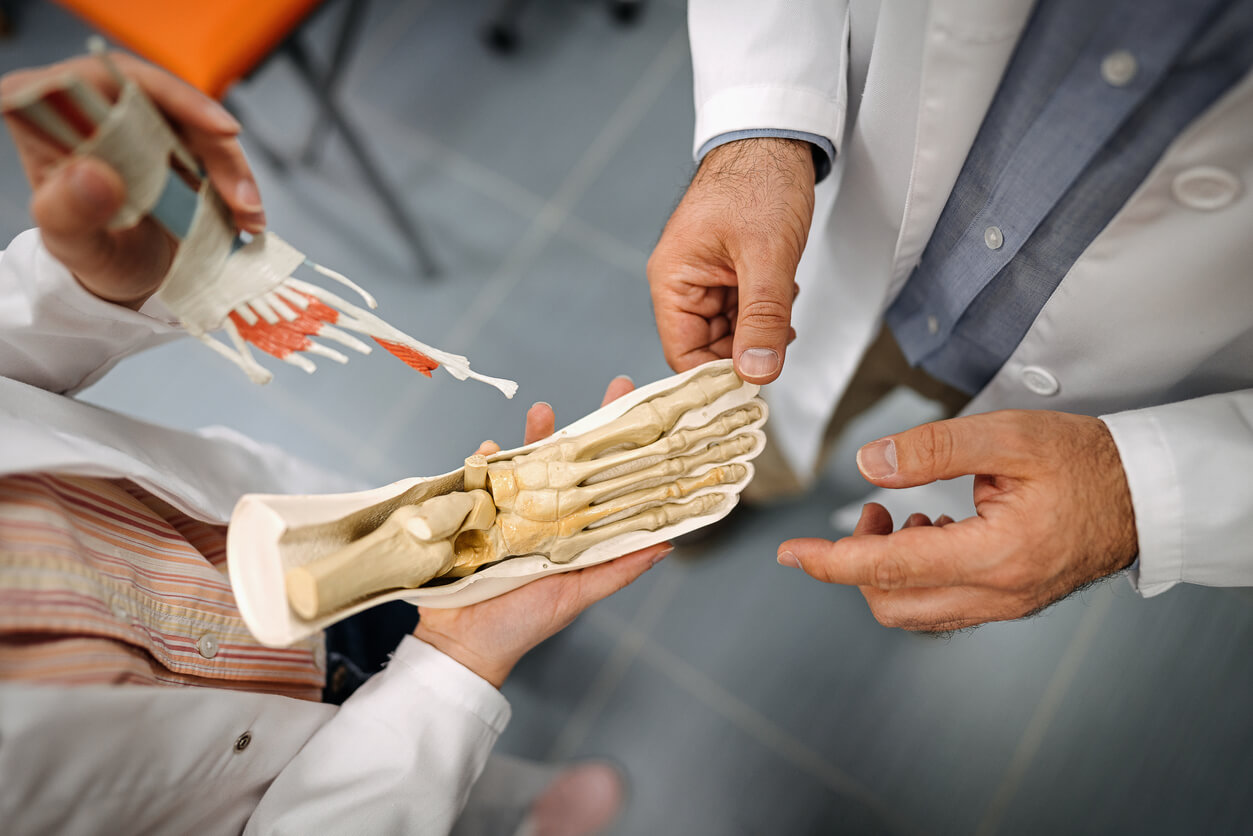Is sesamoiditis typically treated surgically with a sesamoidectomy procedure?
Sesamoid bones are different from other bones in the body. Instead of being linked together at joints like most other bones are, a sesamoid bone is embedded in a tendon. These bones are found at joints and, because of their unique placement, help to facilitate movement, making it much smoother than it would otherwise be.
The most well-known sesamoid is the patella or kneecap. Most of us have tried moving the kneecap around and experienced how it just kind of floats. There are sesamoids doing the same thing in the hands, wrists, and feet.
In each foot, there are two pea-shaped sesamoid bones. They are located under the big toe joint in the ball of the foot where they provide leverage and increase the ability of this part of the foot to transmit muscle force and withstand weight being loaded onto the ball of the foot. This is especially true of activities like running, jumping, dancing, and walking any distance in high heels.
What Is Sesamoiditis?
We are all aware of the issues that can result from overuse and overstretching of joints in other areas of the body, like the ankles and knees. The feet have the same vulnerabilities. Sesamoiditis is a general term to describe pain at the sesamoids. This is felt under the ball area of the foot under the big toe. Seasmoiditis can be due to acute fracture, stress fracture, loss of blood supply to bone(avascular necrosis), or just inflammation. The symptoms of sesamoiditis include pain, inflammation around the sesamoids, as well as swelling and bruising. The pain is usually experienced when attempting to walk or exercise, and pushing off through foot. Heeled shoes often are more painful.
As would be expected, sesamoiditis often develops due to the repetitive movements of runners, golfers, baseball catchers, tennis players, and golfers.
Treating Sesamoiditis
In the most severe cases of sesamoiditis, especially when there is also a fracture of the sesamoid bone, surgery may be recommended. The procedure is a sesamoidectomy and does not typically require general anesthesia. A small incision is made to allow the removal of damaged bone and the repair of surrounding tendons.
Following a short period in recovery, the patient will go home the same day wearing a surgical boot or splint. Weight should be kept off the affected foot for a couple of weeks and return to normal activities can be expected in roughly three months.
For most cases of sesamoiditis, however, surgery will not be required. Treatment will depend on the nature and extent of the damage done to the tendons and some combination of the following options will likely be recommended by your orthopedist:
- Activities determined to have been the cause of the injury should be stopped as much as possible
- Rest, icing, and elevation
- Medications, such as aspirin or ibuprofen, may be suggested to reduce pain and swelling
- Comfortable, well-fitting shoes should be worn and footwear like high heels, which increase pressure on the ball of the foot, should be avoided
- Cushioning pads can be used to relieve pressure and stress on the ball of the foot
- Reduce placing weight on balls of the feet whenever possible to give the foot a chance to heal
- Steroid injection may be recommended
Return to normal activities should be done gradually and it is important to contact your orthopedist if the condition appears to be worsening.
If you have questions or concerns about any foot or ankle issues, Dr. Christopher Hubbard is a board-certified Orthopedic Surgeon with Ortho-Care Wayne in Passaic County New Jersey and is the former Chief of the Foot and Ankle Service at Mount Sinai Beth Israel in NYC.
To schedule an appointment, or if you just have questions, please use our convenient online contact form by clicking here.
